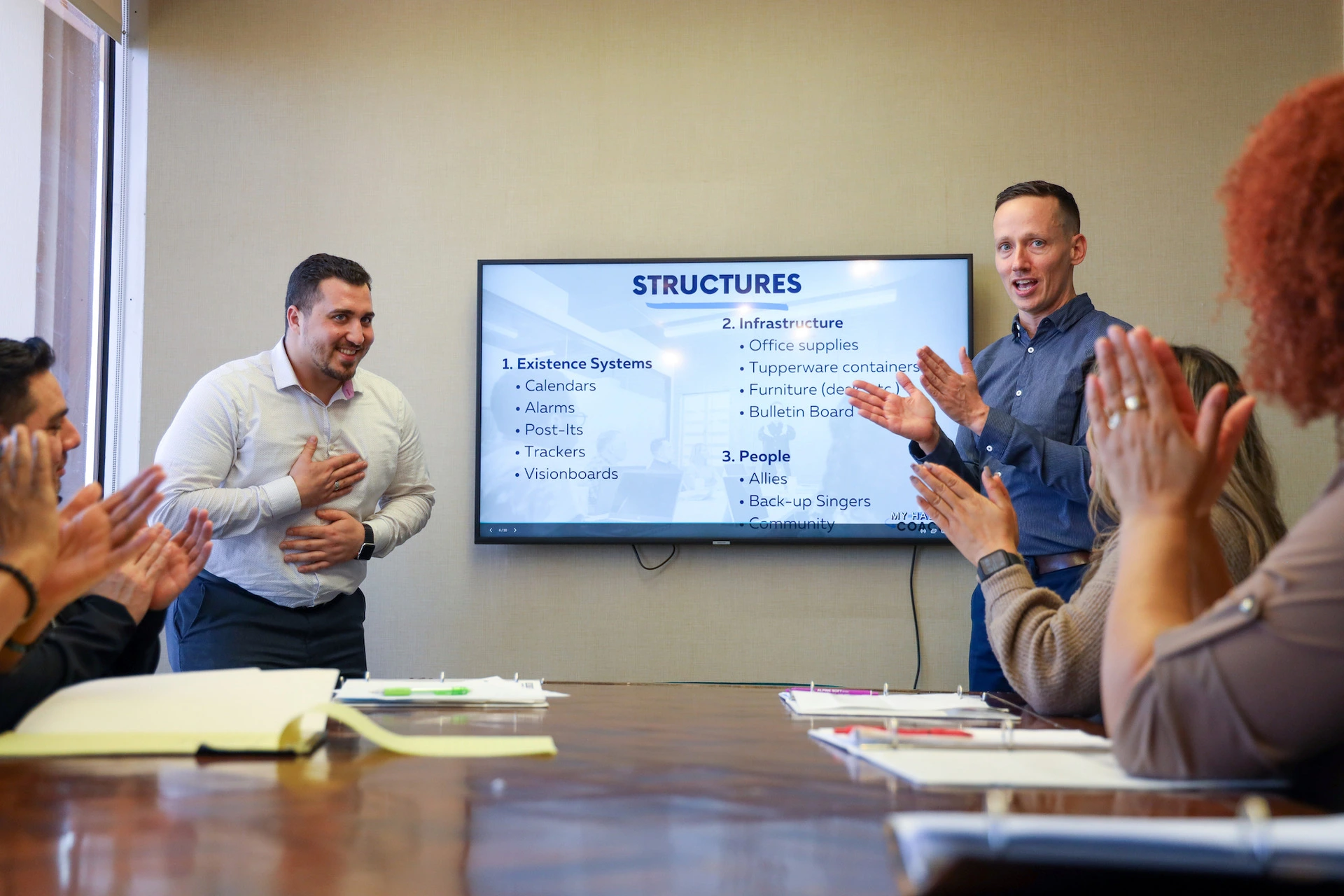Today, we’re diving into something that can transform how you approach problems, make decisions, and lead both in your personal and professional lives. I’m talking about Systems Thinking and why it’s so important to move beyond the type of thinking that we’re more used to, which is reductionist, linear, cause-and-effect thinking.
So, what’s the difference here? Cause-and-Effect Thinking is straightforward—it assumes that one action directly causes a specific outcome. While this can work for simple issues, it often misses the mark when dealing with the complexities of real-life situations. Systems Thinking, on the other hand, is all about looking at the whole picture. It recognizes that systems are made up of interconnected and interdependent parts, and changes in one part can ripple through the entire system.
By adopting Systems Thinking and becoming a Systems thinker, you can gain a deeper understanding of how the world works, navigate systems more effectively, and produce the results you want. This approach helps us see the bigger picture, anticipate unintended consequences, and make more informed decisions.
First, let’s break down the three key principles of Systems Thinking: Interconnectedness and Interdependence, Feedback Loops, and Emergence.
The first principle is interconnectedness and interdependence. This means that all parts of a system are connected and rely on each other. Think of it like a spider web. If you touch one part of the web, the whole web moves. In the same way, if you change one part of a system, it can affect the entire system. For example, in a workplace, if one department changes its processes, it can impact other departments too. Understanding these connections helps us predict and manage the effects of changes.
Next is feedback loops. These are like loops of cause and effect that keep going around. Imagine you’re adjusting the temperature in a room. If it gets too hot, a thermostat sends a signal to cool it down. That’s a feedback loop. There are two types: Positive feedback loops, which reinforce changes, like a snowball rolling down a hill getting bigger. For example, if you do a good job and get praised, you’re likely to work even harder. And negative feedback loops, which help keep things balanced, like the thermostat example. If something gets too high or too low, the loop brings it back to a stable level.
Finally, we have the phenomenon of emergence. This is when the whole system shows new behaviors or properties that the individual parts don’t have on their own. Think of a jig-saw puzzle. Each piece on its own doesn’t show much, but when you put them together, you see the whole picture. In a team, individual members might have different skills, but together, they can achieve something much greater than any one person could alone. These new properties come from how the parts interact and work together.
Now, let’s see how we can apply these principles with some practical examples.
Let’s imagine you want to get better at time management by implementing time-blocking in your daily schedule. Sounds straightforward, right?
You might think, “If I just block out specific times for tasks, I’ll be more productive.” But this overly simplistic, cause-and-effect type thinking can lead to frustration when interruptions happen, tasks take longer than expected, or you simply forget about other people’s needs, expectations, or priorities, which throws off that beautifully and meticulously designed calendar.
Instead, you have to consider the bigger picture. Time-blocking isn’t just about your own tasks, behavior and habits. It’s a reflection of—well, your whole life. And your life is a part of multiple systems, and those systems are all interconnected in different ways. Think about all the people you interact with—clients, colleagues, family. Your calendar is going to have things that are influenced by all of those connections – things like shared calendar events, recurring meetings meetings, or personal commitments that aren’t on your work calendar.
As a Systems Thinker, you recognize the interconnectedness of your time with others. To have your planning and calendaring be as effective as possible, you might share your calendar with your team and family, get their input, and identify when everyone’s available. With regard to time-blocking, feedback loops might look like this: to get better at time-blocking, you have to get better at thinking of all of your priorities and commitments holistically and critically, and communicating with others in your life about those things. The better you do that, the more accurate and rigorous your time blocking will be. The more accurate and rigorous it is, the more productive you’ll be. And the more productive you are, the more motivated you’ll be to time-block.
So here…for example, maybe you find out that blocking off mornings for focused work is great, but afternoons need to be more flexible for meetings and family time. This way, your schedule becomes more sustainable and balanced, leading to better productivity and workability in your relationships.
In this time-blocking example, the emergent properties like a balanced schedule, better relationships, and more motivation all come together because you’re not just focusing on your own tasks. You’re getting input from others, adjusting your plans, and paying attention to how things fit together. All these good things emerge from the way everything in your system interacts, not just because you decided to time-block.
Let’s move from time-blocking to another example. Think about wanting to set better boundaries in your relationships, whether at work or home.
You might think, “If I just set boundaries and tell people what they are, people will respect them, and I’ll feel better.” But this is cause-and-effect thinking. Implementing behavior change is rarely that simple, and getting people to respond differently to your new behaviors isn’t either. People likely won’t immediately respect your boundaries, which can lead to stress and conflict.
Systems thinking means looking at the specific boundaries you’re setting and the different people you are setting them with. But it also requires, again, looking at the bigger picture. There are all kinds of things you have to take into consideration. Different companies and even culture view boundaries differently. Saying no, communicating directly, starting and ending meetings on time, what types of behavior are acceptable and unacceptable, all vary depending on the environment inside of which the specific behavior occurs. So, if you want to grow in setting boundaries, you have to understand it might be an uphill battle initially.
Imagine you start saying no to late-night work emails to protect your personal time. At first, colleagues might not take it seriously. You might need to have multiple conversations, explain your reasoning, and even advocate for new organizational policies. Here’s where feedback loops come into play. You start by setting the boundary, and initially, you get pushback—that’s a form of negative feedback. But you dig deeper and ask, “Why are we all working late?” Maybe it’s because people aren’t managing their daytime hours effectively. You might propose changes, like setting clear priorities during the day, which reduces the need for late-night emails. Over time, as these daytime changes take effect, people stop emailing late at night because they’re managing their time better during the day. This feedback loop improves overall productivity and helps maintain your boundaries, leading to better work-life balance for everyone.
In the boundaries example, you end up with emergent properties like a healthier work-life balance, better productivity, and a more respectful work culture. This doesn’t just happen from setting a boundary alone. It emerges from the mix of changing how everyone works during the day, talking about what’s needed, and making some company-wide changes. It’s all these parts working together that create the big improvements.
Finally, here’s one more example, not about your own behavior, but with regard to someone else. Consider a low-performing team member.
The typical approach might be, “If I tell the low-performing employee what result I want, what actions they need to take and how to do it, their performance will improve.” This might lead to short-term gains but may overlook potential deeper issues, resulting in ongoing performance problems.
Consider Tom’s Widget Factory. Tom notices that one of his team members, Jane, isn’t meeting her sales goals. Instead of just giving her feedback, or even giving her a coach, he looks at the overall system. He notices that Jane’s performance is affected by several things in the system around Jane—unclear expectations, lack of resources, and poor team dynamics.
By recognizing these interdependencies, Tom starts by clarifying job roles and expectations for everyone. He gathers feedback from Jane and her colleagues through regular check-ins and anonymous surveys. This way, he identifies specific pain points like inadequate training and tools. He then implements regular team-building activities to improve dynamics and allocates budget for better resources.
Now, let’s talk about feedback loops in this context. Tom sets clear expectations and provides Jane with the necessary resources. As Jane starts performing better, the team dynamics improve because they see her contributing more effectively. This positive feedback loop reinforces the initial changes Tom made. As the team sees better results, they become more motivated, and the performance of the entire team improves. This not only helps Jane but also boosts the entire team’s morale and productivity.
With Jane at Tom’s Widget Factory, when Tom makes some changes like setting clear roles, giving better tools, and helping the team work better together, you get emergent properties like a more motivated and better-performing team. These great results don’t just come from helping Jane alone. They emerge from all the changes interacting with each other, making the whole team stronger and happier.
So there you have it. Systems Thinking gives you a powerful framework for understanding and addressing seemingly simple problems that actually have complex causes. By focusing on interconnectedness, feedback loops, and emergence, you can make more informed decisions that lead to better outcomes.
Now, I encourage you to take action. First, reflect on how these principles apply to your own work and life by doing the reflective journaling provided on our platform. Second, start having new types of conversations and creating structures that influence the systems you live and work in, producing more of what you are committed to.
Remember, Systems Thinking is one of the seven areas of Leadership Mastery l. By embracing Systems Thinking, you’re not just gaining new knowledge—you’re transforming the way you interact with the world.




